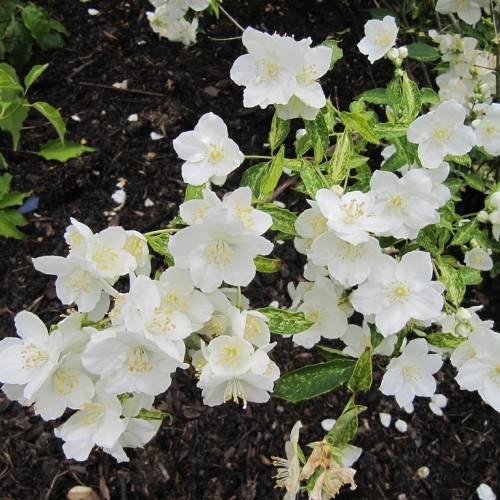
mock orange
Philadelphus 'Innocence'
Cycle:
Perennial
Watering:
Average
Hardiness Zone:
4 - 8
Flowers:
Flowers
Sun:
Full sun,part shade
Leaf:
Yes
Growth Rate:
High
Maintenance:
Low
Drought Tolerant:
Yes
Care Level:
Medium
watering
Mock orange (Philadelphus 'Innocence') requires consistent and thorough watering for optimal growth and flowering. Water whenever the top 1 to 2 inches of soil is dry, ensuring the soil is evenly moist at all times. You may need to water deeply once or twice a week, depending on the conditions such as temperature, humidity, soil type, and sunlight. To ensure adequate moisture, water until the soil is saturated and water runs from the pot's drain holes. During extremely hot and dry spells, water more frequently. Make sure to avoid over-watering, which can cause root rot.
sunlight
Mock oranges such as ‘Innocence’ need full sun for best health and flower production. Plant it in an area that receives at least 6 to 8 hours of direct sunlight each day. During the hottest parts of the day, some midday shade may help ensure optimum performance. This will also help to ensure that the mock orange has plenty of time to rest and cool off each day.
pruning
Mock orange (Philadelphus 'Innocence') should be pruned in early spring, as soon as any danger of frost is gone. Pruning should generally be selective and light, but can be heavier if necessary. Remove dead, broken, or diseased branches first, as well as those that are rubbing against each other. Then remove overcrowded or overlapping branches. If you choose to heavily shape or prune a mock orange, it is best to limit it to once or twice in a 5-year period. Finally, underprune any sucker growth and excess errant shoots at the base of the shrub.
